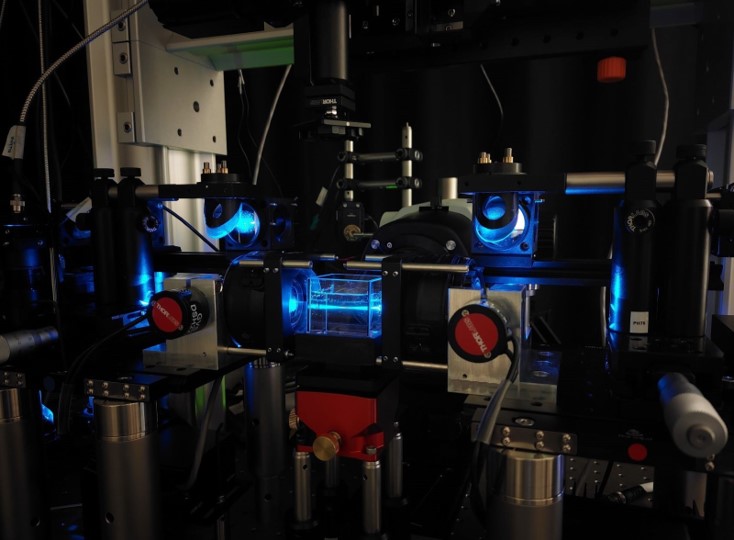Cardio-Photonics
Cardiac electric conduction is a tissue level phenomenon based on current propagation across billions of cells whose electro-mechanical function of contraction is intricately intertwined with their structure. Our team develops novel optical microscope technology to investigate cardiac structure and cardiac function to aid in our understanding of the healthy and the diseased heart.
To investigate cardiac structure, we are building a light-sheet microscope based on the open-source mesoSPIM project. In combination with tissue clearing techniques which render opaque biological tissues transparent, we will employ this quantitative imaging system to try and understand the structural remodelling that takes place in hearts that have undergone scarring due to myocardial infarction.
To help biologists understand the earliest stages of heart development, we have developed techniques to computationally "freeze" the periodic motion of the heartbeat, enabling us to acquire high-resolution 3D snapshot microscope images of the unperturbed beating zebrafish heart. By developing algorithms to maintain that "phase lock" even in the face of dramatic developmental changes, we are able to sustain time-lapse imaging for 24 hours or more. This unlocks huge potential for biomedical research in the heart. Several recent biological publications have only been possible thanks to our unique ability to directly witness dynamic cellular processes within the beating heart. These have included the cellular migrations driving the developmental milestone known as trabeculation, understanding immune response to injury and the role of macrophages in heart regeneration following injury.
On the functional side, we are developing multiphoton microscopy tools to help us address a fundamental question: how do electrical wavefronts propagate through the thick muscular wall of the heart? We are setting up 2- and 3-photon microscopy, second harmonic generation imaging, pulse shaping and remote focusing tools to answer this challenge-based research question. We are working towards direct observation of previously inaccessible cardiac dynamics to provide insights that will change our understanding and treatment of arrhythmias.

Another aspect of heart function is the way it pumps blood. We have developed various new approaches to map out blood flow fields within the cardiovascular system, extracting high-precision measurements from challenging, noisy biological environments. These direct experimental measurements of blood flow fields complement computational modelling to better understand heart function, and pave the way for integrated studies of the developmental coupling between heart structure, fluid flow and electrophysiology.

